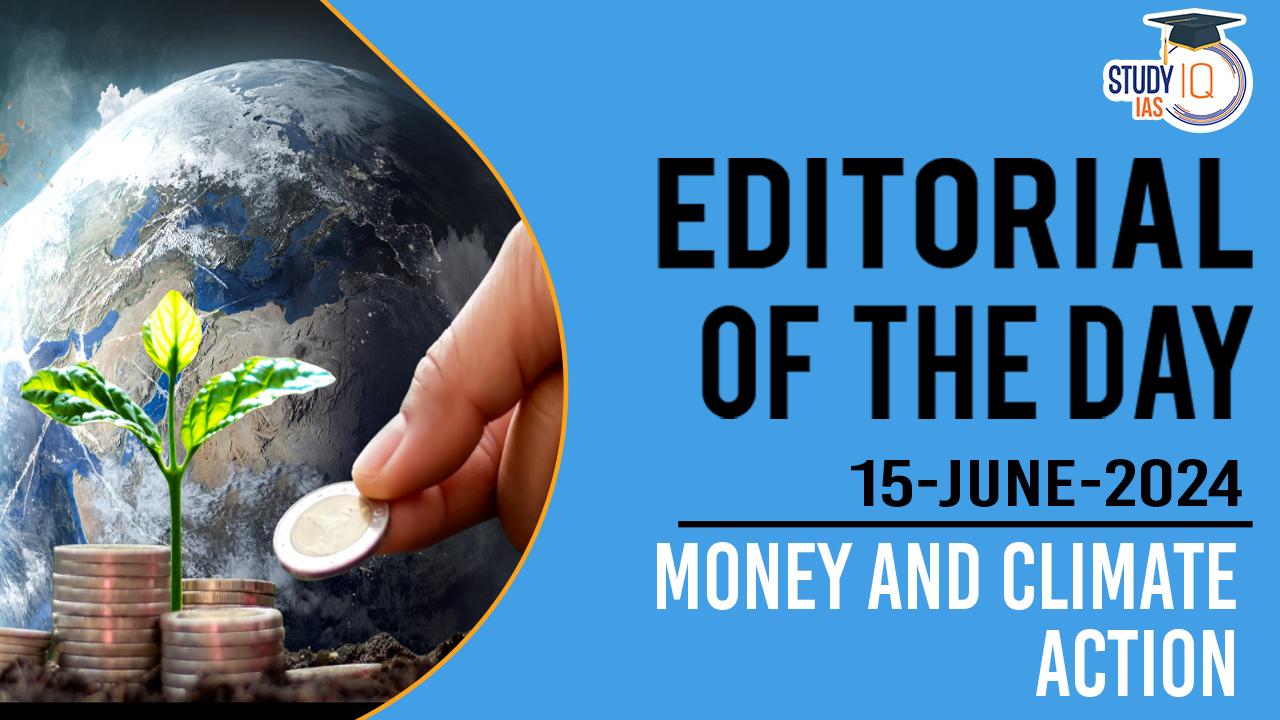Table of Contents
Context
- The recent climate meeting in Bonn, Germany, has highlighted the ongoing challenges in defining a new climate finance goal.
- By the end of 2024, countries must finalize a new financial target beyond the existing $100 billion per year to support developing nations in combating climate change.
Outcomes of the Bonn Talks
- Lack of Consensus: The Bonn talks ended without a significant breakthrough on the new climate finance goal.
- Input Paper: The outcome was a 35-page, 428-paragraph “input paper” summarizing the wish lists of different countries. This document will likely form the basis of a formal negotiating draft for COP29 in Baku, Azerbaijan.
Search for a New NCQG (New Collective Quantified Goal)
- The increased target, or the New Collective Quantified Goal (NCQG), for the post-2025 period, is to be finalised this year.
- Importance of Financial Support: Money is essential for climate action, including mitigation, adaptation, and compliance with the 2015 Paris Agreement requirements.
- Current Obligations: Under the UN Framework Convention on Climate Change (UNFCCC), developed countries must provide financial support to developing nations due to their historical responsibility for climate change.
Historical Context of Climate Finance
- $100 Billion Pledge: In 2009, developed countries pledged to mobilize $100 billion annually by 2020 for climate action in developing countries.
- The $100 billion figure was first proposed by then-US Secretary of State Hillary Clinton at COP15 in Copenhagen and later accepted by other Annexure 2 countries.
- Unmet Goals: Although an OECD report claimed the $100 billion target was met in 2022, developing countries dispute this, citing double-counting and innovative accounting practices.
The Adequate Amount of Climate Finance
- Trillions Needed: Estimates suggest developing countries need trillions of dollars annually to meet climate goals. For example:
- UNFCCC assessment: $6 trillion needed by 2030.
- Adaptation needs: Between $215 billion and $387 billion annually.
- Global clean energy transition: $4.3 trillion annually till 2030, and $5 trillion annually after that till 2050.
- Proposals from Developing Countries:
- India: At least $1 trillion annually after 2025.
- Arab countries: At least $1.1 trillion.
- African countries: $1.3 trillion.
Debate Over Contribution Responsibilities
- Annexure 2 Countries: According to the UNFCCC and Paris Agreement, only the 25 Annexure 2 countries and the European Economic Community are obligated to provide climate finance.
- Shifting Responsibilities: Developed countries argue that other nations, now economically stronger, should also contribute. Countries like China, Gulf nations, and South Korea are not part of Annexure 2 but are significant global players.
- China’s Stance: At Bonn, China emphasized its role in combating climate change but refused to take on additional financial responsibilities.
All Eyes on COP29 in Baku
NCQG Negotiations: The new NCQG is the primary agenda item for COP29. An agreement is crucial, and the figure must be higher than the current $100 billion per year.
Conclusion
The Bonn climate talks underscore the critical role of financial commitments in driving effective global climate action. As the world looks towards COP29 in Baku, it is imperative for nations to finalize a new, ambitious climate finance goal that addresses the growing needs of developing countries and ensures a collective effort in tackling climate change.


 Indus Water Treaty 1960 Suspended by Ind...
Indus Water Treaty 1960 Suspended by Ind...
 5 Years of SVAMITVA Scheme and Its Benef...
5 Years of SVAMITVA Scheme and Its Benef...
 Places in News for UPSC 2025 for Prelims...
Places in News for UPSC 2025 for Prelims...





















